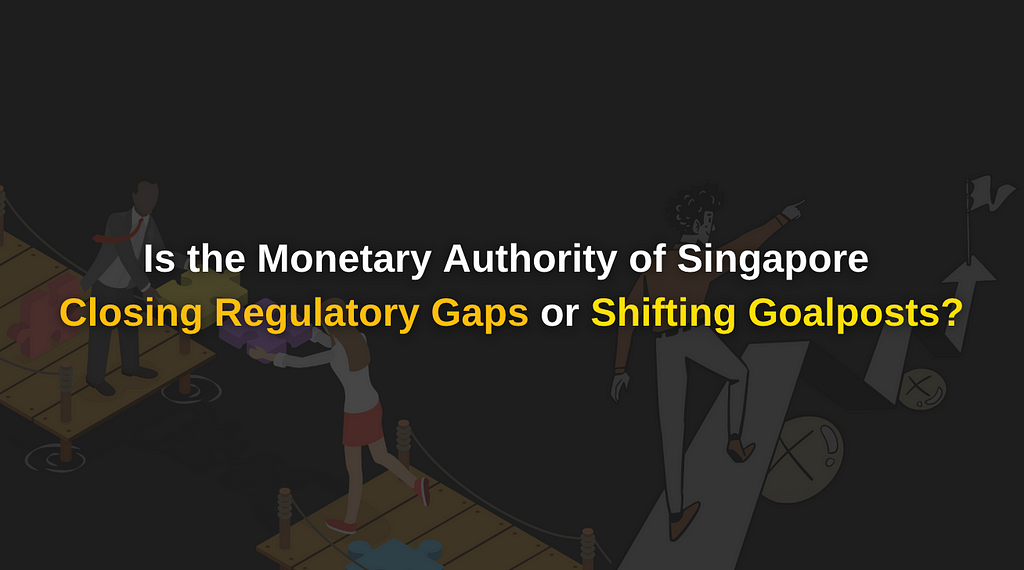Is the Monetary Authority of Singapore Closing Regulatory Gaps or Shifting Goalposts?
0
0

Introduction
The Monetary Authority of Singapore (MAS) has taken a proactive approach to financial regulation in order to preserve Singapore’s status as a global financial hub. As both the central bank and the financial regulatory authority, MAS is at the forefront of tackling emerging challenges posed by digital assets, cross-border transactions, and systemic risks. Yet as Singapore’s regulatory architecture evolves, a thorny question lingers: is MAS narrowing long-overdue regulatory gaps, or shifting the goalposts in ways that introduce uncertainty for market participants?
MAS’s Mandate in Regulating Cryptocurrency
MAS has long been regarded as a sophisticated, principles-based regulator — striking a balance between innovation and systemic stability. This approach has earned international recognition and helped establish Singapore as a financial centre known for transparency and trustworthiness. However, the rapid emergence of financial technologies, cryptocurrencies, and decentralized finance — compounded by geopolitical and economic volatility — has prompted a recalibration of MAS’s regulatory mandate.
The Payment Services Act (2019) & thereafter
The Payment Services Act (PS Act), which came into force in 2020, granted MAS broad powers to regulate payment services and digital assets. Notably, Section 100(3) empowers MAS to make regulations for carrying out or giving effect to the Act.
Since 2021, MAS has launched several major initiatives expanding its regulatory scope to address anti-money laundering (AML), consumer protection, and technological risk:
2021: Issued guidelines restricting retail-focused mass-market advertising and sponsorships.
2022: Released a consultation framework for stablecoins, emphasizing reserve backing, redemption rights, and issuer conduct.
2023: Introduced stricter due diligence standards and implemented the “travel rule” for digital payment token (DPT) service providers.
2024: Implemented proposed amendments to the PS Act, carving out greater powers for itself to regulate offshore transactions involving non-resident customers.
2025: Mandated that service providers dealing in DPTs and capital market tokens (such as security tokens) to any customers — whether based in Singapore or abroad — be licensed under the Financial Services and Markets Act 2022 (FSMA).
Narrowing Gaps or Redrawing Lines?
Supporters contend that these reforms are essential to address longstanding loopholes. For example, the original PS Act excluded risk-prone sectors such as unregulated wallet providers and offshore entities operating with limited oversight.
Critics, however, argue that the ever-shifting regulatory terrain resembles a moving target. Entities that previously adhered to compliance standards may suddenly find themselves in breach due to revised interpretations or expanded regulatory reach. Some suggest this reflects a shift away from principle-based regulation toward more prescriptive micromanagement.
Navigating Policy Trade-Offs
MAS must walk a fine line between competing objectives:
Consumer Protection vs. Innovation: Overly burdensome rules may stifle legitimate fintech growth, particularly among SMEs.
Policy Alignment vs. Local Nuance: Global initiatives by the BIS and IMF press for harmonized crypto standards, but excessive alignment could dilute Singapore’s domestic agility.
Legal Certainty vs. Regulatory Flexibility: While adaptability allows MAS to respond to emerging risks, frequent changes complicate long-term planning for financial institutions.
Conclusion
MAS’s evolving approach to digital asset regulation reflects both ambition and foresight. Whether it is seen as closing regulatory gaps or shifting goalposts largely depends on perspective. For policymakers, these strategic recalibrations in a rapidly transforming financial landscape. For market participants, the unpredictability of rule-making may undercut the very stability that regulation is intended to ensure.
Ultimately, the core issue lies not just in what MAS regulates, but in how predictably, transparently, and collaboratively it does so.
Is the Monetary Authority of Singapore Closing Regulatory Gaps or Shifting Goalposts? was originally published in Pundi X on Medium, where people are continuing the conversation by highlighting and responding to this story.
0
0
 Manage all your crypto, NFT and DeFi from one place
Manage all your crypto, NFT and DeFi from one placeSecurely connect the portfolio you’re using to start.



